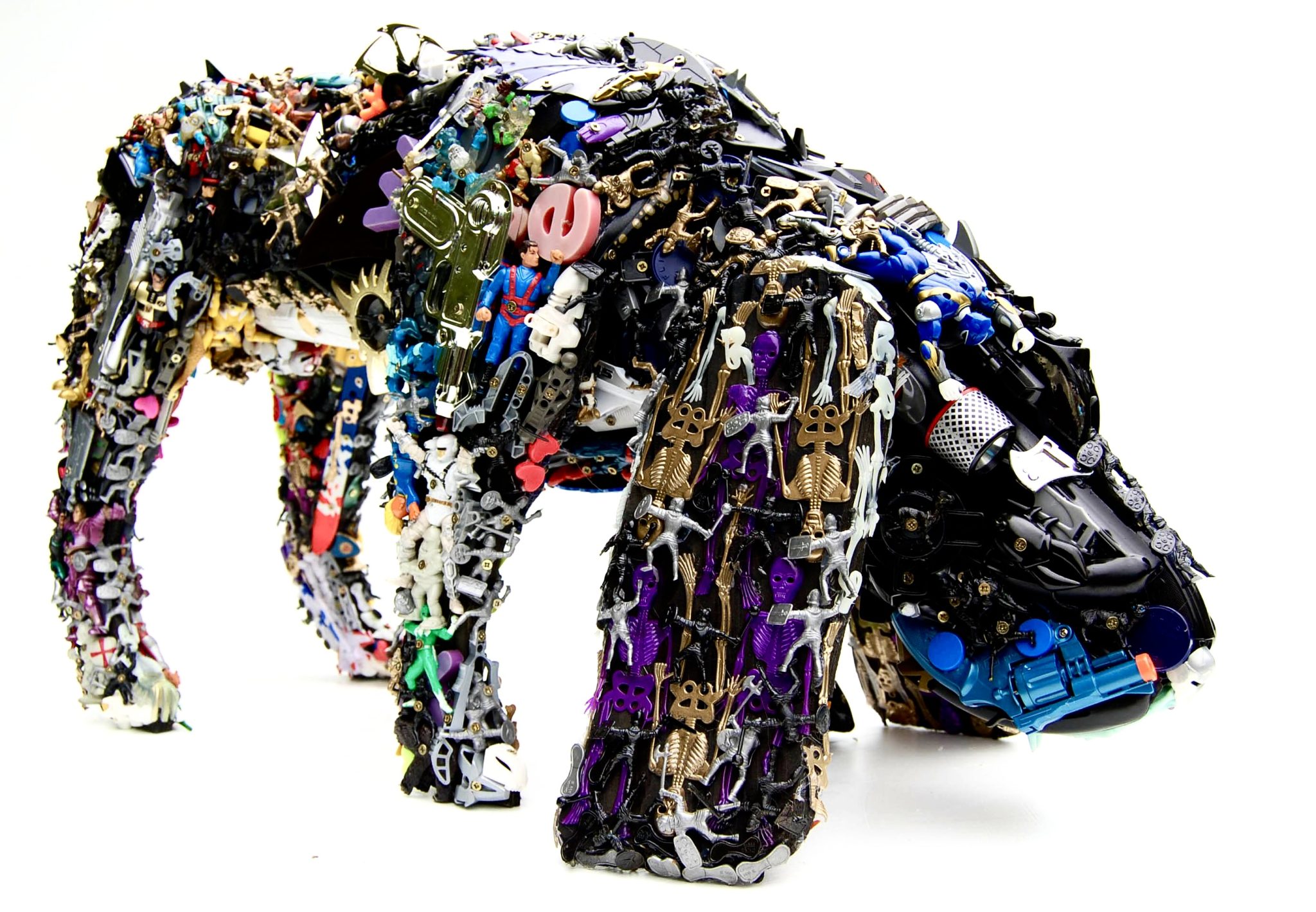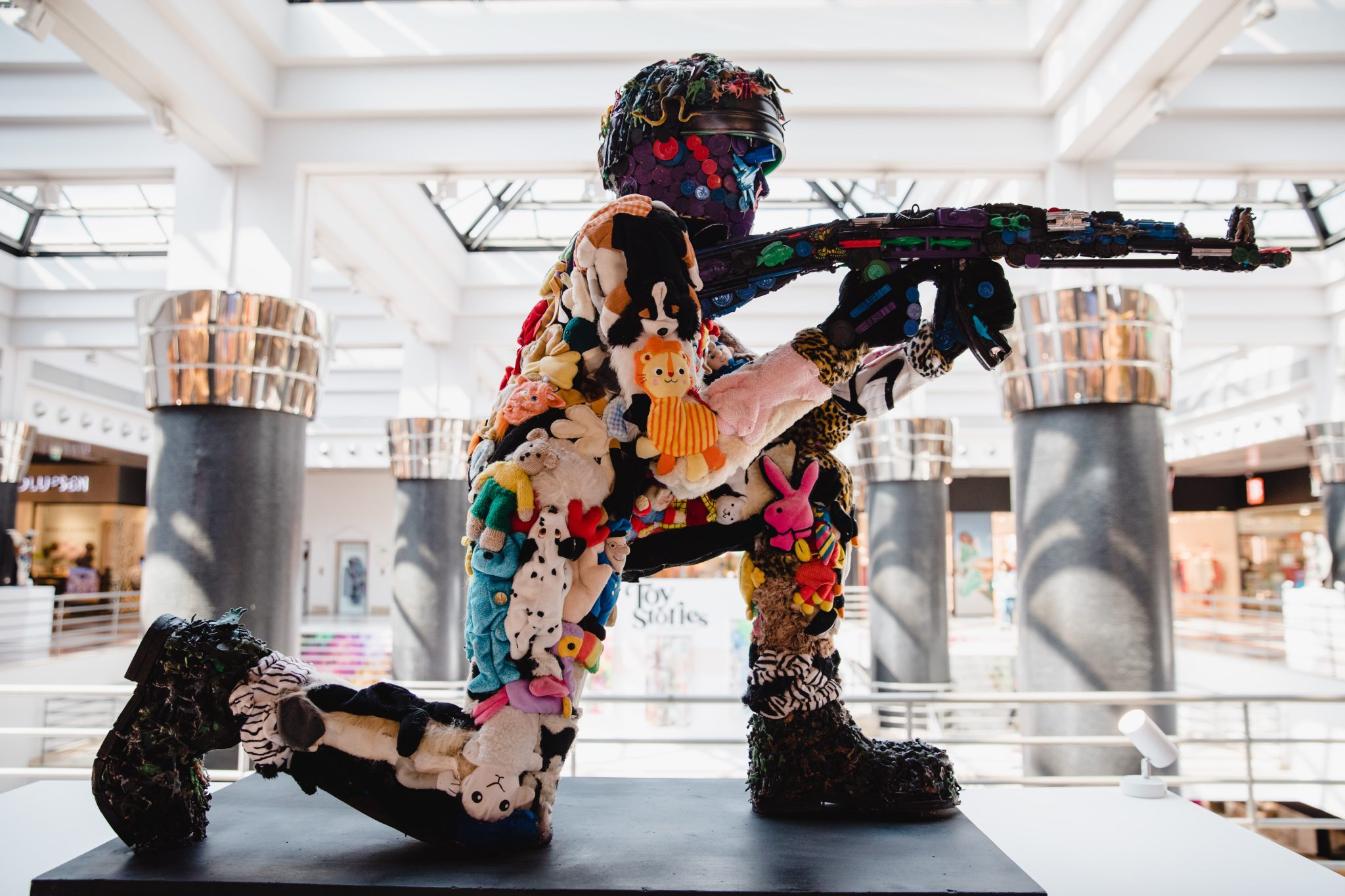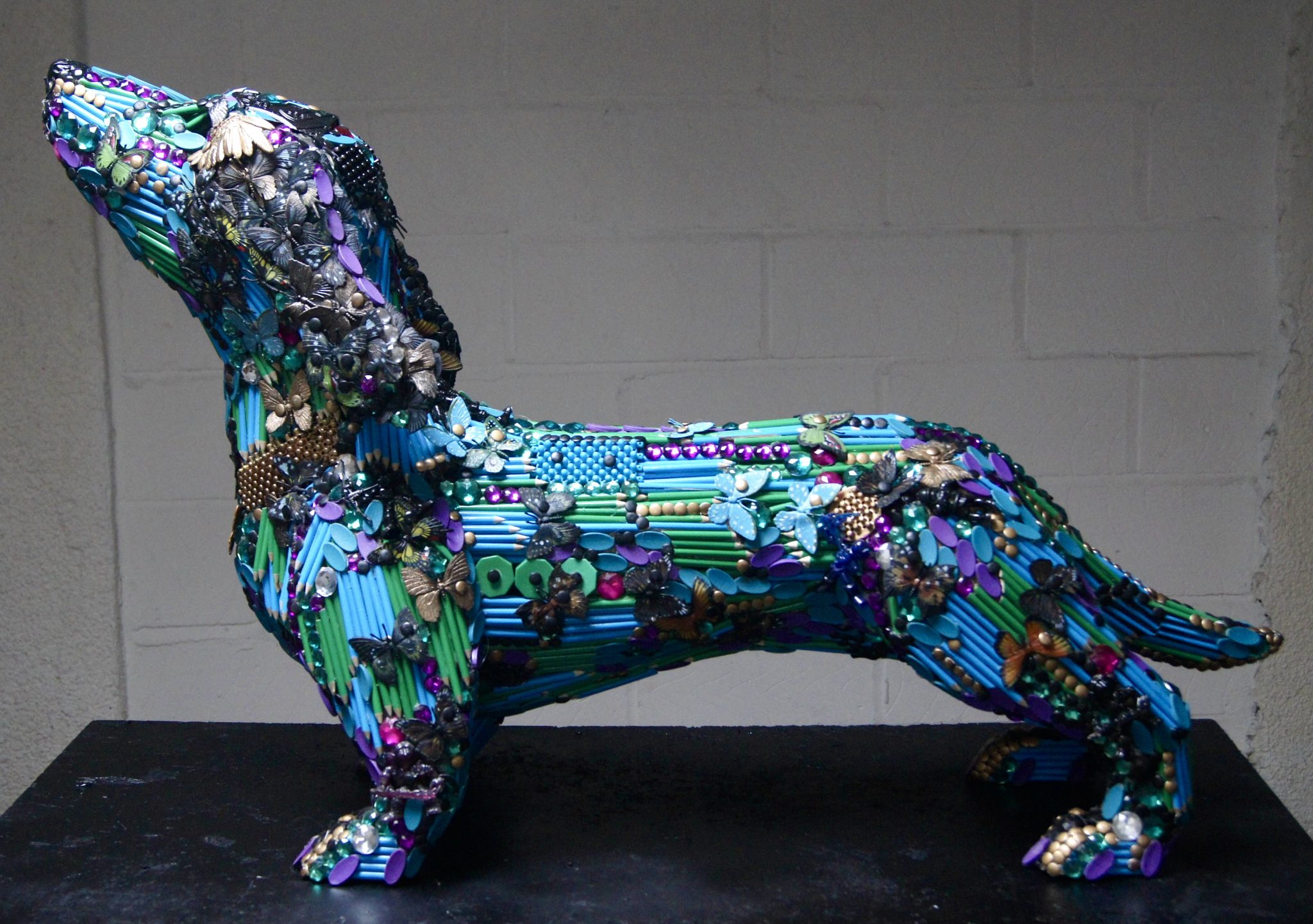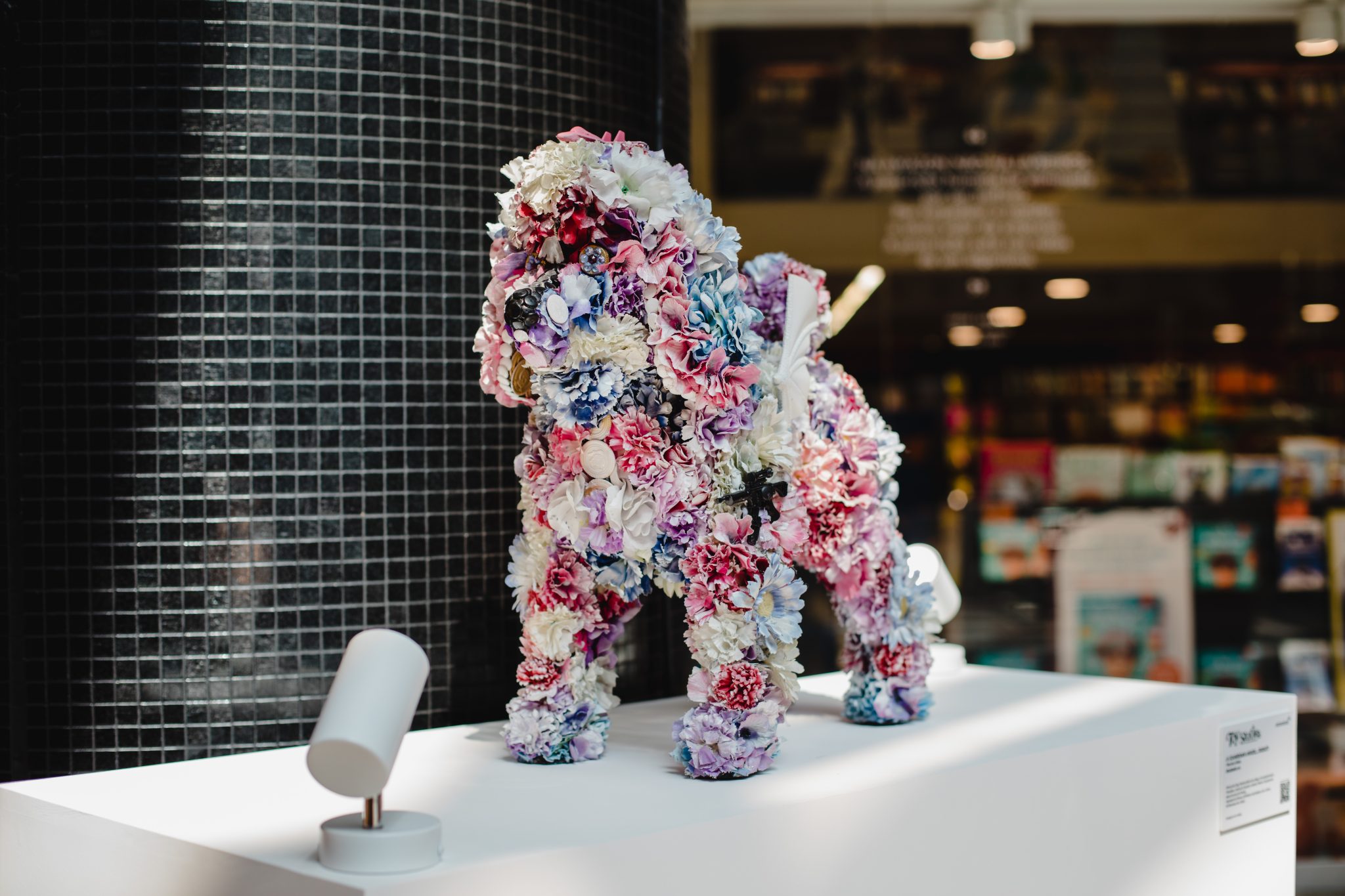



Robert Bradford has been fixing multi-coloured small plastic toys onto wooden armatures by various mean since the early 2000’s. These forms are almost always organic, human or animal (most often dogs), and consist of a bewildering array of found, discarded, bought or reclaimed nick-knacks. Glued and screwed into place to mimic the sinews, skins, furs and bones of the parent sculpture. Unattached, these defunct plastics resemble the insides of a seabird’s gut, a mere random display of lost non-perishables. Artfully and painstakingly relocated, however, they are reborn to find ecstatic new purpose and meaning in the surreal world of contemporary art.
Pre-dating the Trash Art paintings by over a decade the ongoing ‘Toy Story’ sculptures were, and are, a significant milestone in Bradford’s career to date. Not only does the popularity of these objects continue unabated, they provide a useful backdrop for the perhaps more difficult 2-dimensional works that follow. Notions of recycling and circular economies, later resurfacing in the Trash Art paintings, are first evident here. The modern-day concern with plastic pollution is clear. This extensive body of work is the result of a hard-fought for conjunction of idea and circumstance. They manage to convey a certain personal posture, an irreverent attitude, a cynical sensibility perhaps that projects deep-set beliefs with levity and unhindered expression and generosity towards the viewer.
Art audiences are generally attracted to things they recognise, especially colourful, fun and playful things that revel in joyous forms. The arrangement of many objects collaged together in one image is a micro-macro trick, a pleasing visual game ensuring that an object is recognisable as one thing close-up, and yet something else from a distance. Such visual pleasures encourage us to move in and out from the sculpture, travel around it, explore it for further delights. Often, the nature of the small surface objects tell the story of the sculpture as a whole (see ‘Flower Dog’, ‘Power Ranger’, ‘Soft Toy Dog’). In his own words Bradford states, ‘I have to confess to being a Formalist, in the sense that for me the products/forms that I arrive at constitute a large part of their “message” and meaning’.
And let’s not forget the inherent humour in the work! As his son, I can assure you that Robert has always taken great delight in absurdity and kitsch. A very British, punky compulsion to undermine pomposity pervades the ‘Toy Story’ sculptures. The throw-away nature of the material gleefully subverts notions of high art and fancy technological processes, while their accessibility chimes with the masses.
That is not to say that the ‘Toy Story’ works are not simultaneously serious and contemporary. On the contrary. Bradford’s consistent use of low-brow material is knowingly descended from the Arte Povera movement of late-sixties Italy. Bradford’s natural mistrust for authoritative, entrenched systems of art is evident in the way in which both his objects and paintings alike are hollowed of certain dogmatic, prescriptive meanings. Humour and kitsch can be acutely subversive tools; Trojan horses for more complex and radical expressions.
